(Cardboard) Box Camera
This is what's known as a "Box Camera". Box cameras were a really cool product- they allowed the "common man" to get an actual camera, and take up photography!
When they were first introduced by Kodak in 1888, it was sold for $2. Correcting for inflation, that's somewhere between $30-65 in 2020 money.
Finally, a camera for everyone.
The earliest models were as simple as can be- consisting of a cardboard box, a basic singlet lens, "brilliant" style viewfinder (or sometimes none) a single-speed shutter (usually 1/100th roughly) and a manual film transport.
Later models added more features.
The Agfa Box Spezial that's shown above, not only has THREE aperture settings (f/11, f/16, f/22) but even adjustable focus in three steps. It also has a "Bulb" mode setting, and features a vertical and a horizontally oriented viewfinder.
Back in 1931, it was sold at 16,50 Deutsche Mark, which seems to be somewhere around 120 euro in today's purchasing power. (but the calculators don't reach that far back)
A different model I have, the Brownie six-20 E, chose to go with a different feature set- namely "infinity" or "close" focus; no selectable aperture, but an integrated yellow filter for use with black and white films. Also, it featured flash contacts at the side.
Due to the (for today's standards) large negative size of 6x9cm, these cameras can capture a pretty decent image still, if treated right. For today's experiment though, a different sort of box is used.
Due to the (for today's standards) large negative size of 6x9cm, these cameras can capture a pretty decent image still, if treated right. For today's experiment though, a different sort of box is used.
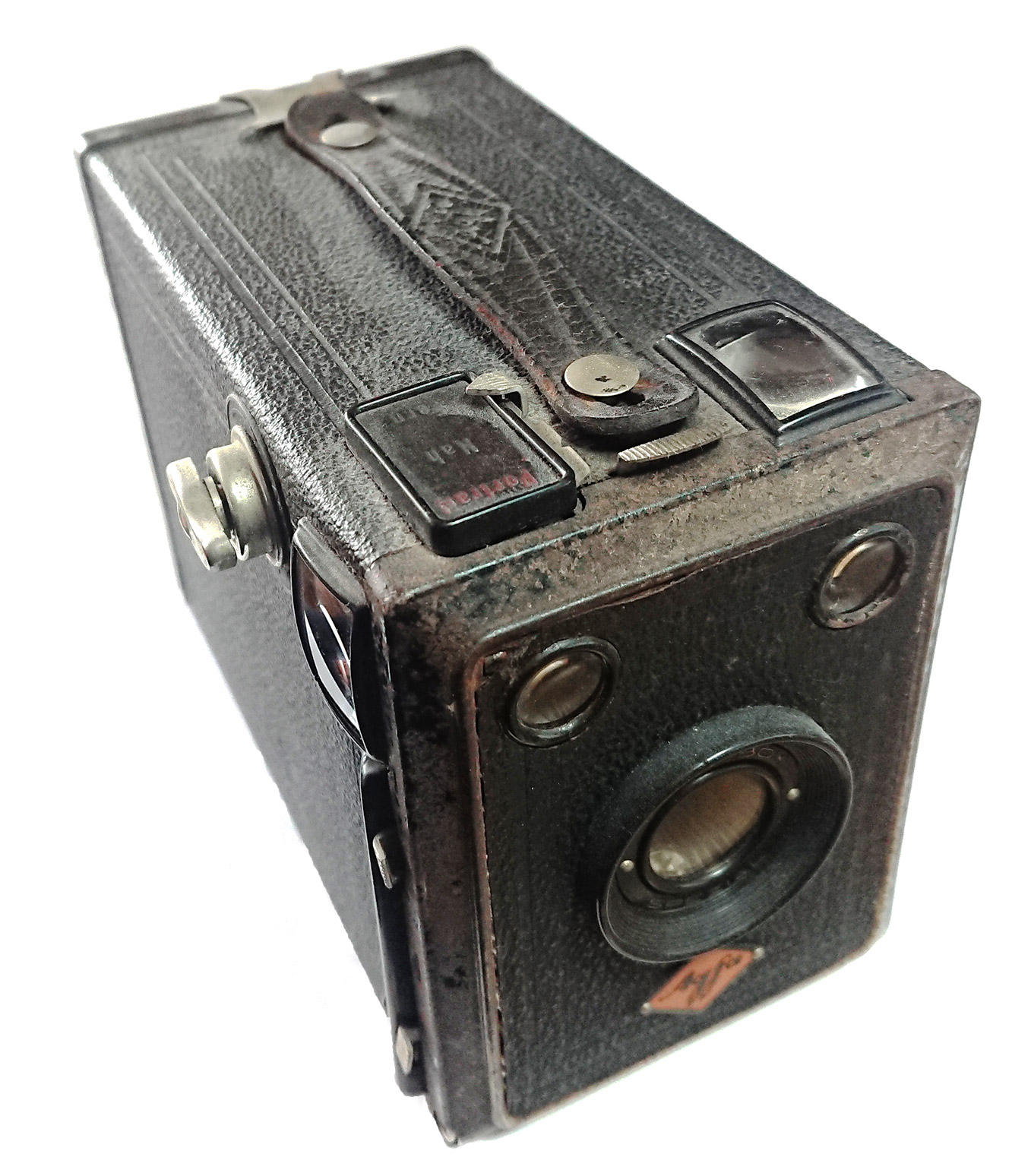
Today's camera, is built from a shipping box, combined with a very cheap magnifying glass.
This magnifying glass was on sale for about 50 cents, so I couldn't resist getting a handful for playing around with optics. I didn't expect much, but was pleasantly surprised when it turned out to be actual glass as the lens. When holding the magnifying glass to a wall, I determined the focal length of it is about 330mm, making it a +3 lens. That also means though, that if I were to put it on a box, I'd get a large-format camera.
So I did.
This magnifying glass was on sale for about 50 cents, so I couldn't resist getting a handful for playing around with optics. I didn't expect much, but was pleasantly surprised when it turned out to be actual glass as the lens. When holding the magnifying glass to a wall, I determined the focal length of it is about 330mm, making it a +3 lens. That also means though, that if I were to put it on a box, I'd get a large-format camera.
So I did.


Here you can see the image being projected on the rear of the box. I decided to bend the image plane as that got me a slightly better result. As you can see at the sides of the box, coverage is hardly a problem with this singlet design.
I took some darkroom paper, taped it to the rear of the box in the darkroom, walked to my window, uncovered the lens; almost immediately I covered the lens again.
It was... very much overexposed. The f/5.6 aperture of this lens is a bit wide actually to hand-control the shutter in the middle of the day. To compensate this, and also to increase sharpness, I put back the circle I cut as a lens hole, with a small aperture in the middle, corresponding to f/16.
As I was already taping stuff together, I decided now would be a fine time to make a viewfinder. The simpelest method? Add another "camera" but with a matte glass.
It was... very much overexposed. The f/5.6 aperture of this lens is a bit wide actually to hand-control the shutter in the middle of the day. To compensate this, and also to increase sharpness, I put back the circle I cut as a lens hole, with a small aperture in the middle, corresponding to f/16.
As I was already taping stuff together, I decided now would be a fine time to make a viewfinder. The simpelest method? Add another "camera" but with a matte glass.
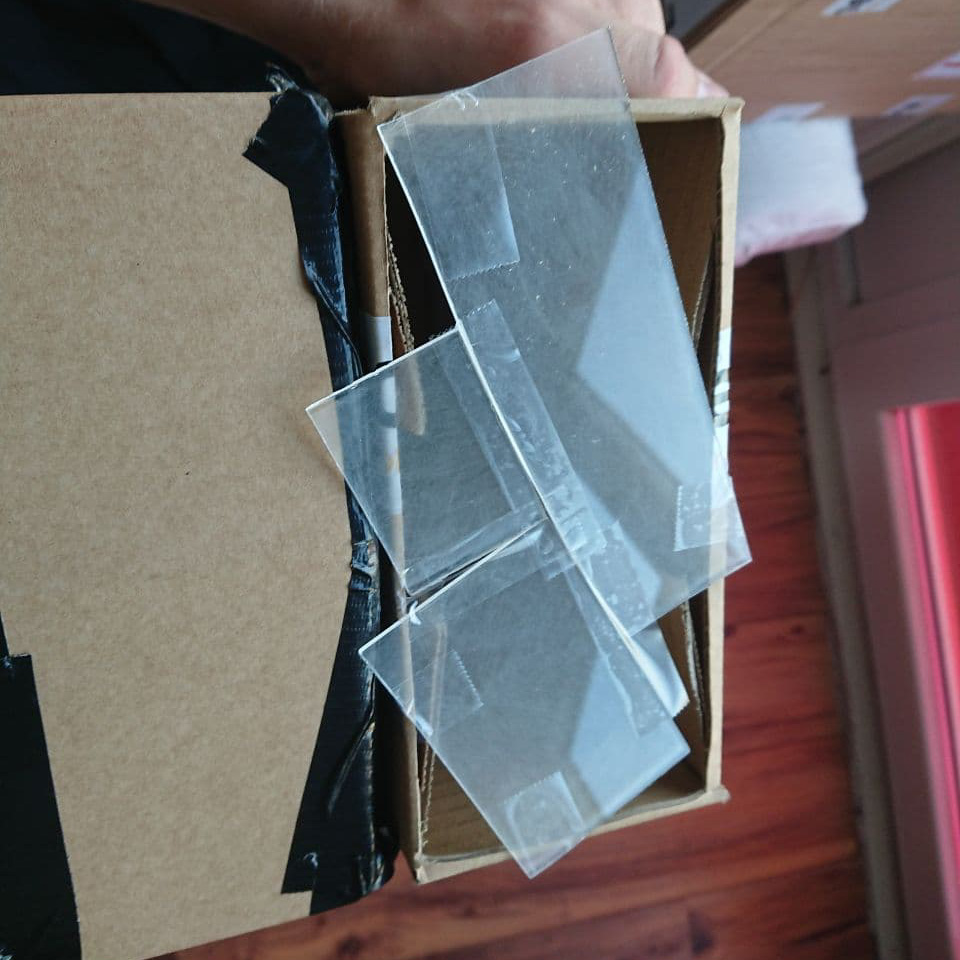
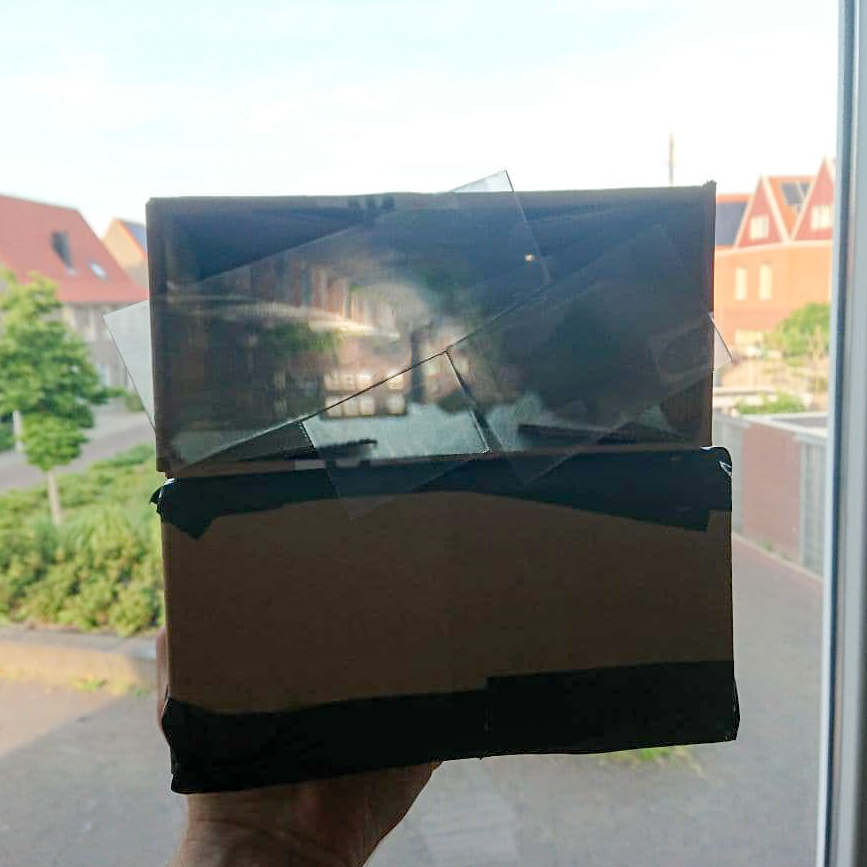
I used some pieces of plexiglass that I’d previously cut to size and sanded to make impromptu focus screens (intended for checking lenses of rangefinders etc) and taped them together to make a mostly-covering viewfinder.
As the viewfinder arrangement was made from two different boxes, (I only had the one in the perfect size) it’s all slightly out of focus. But- you can see what’s going on.
(As the camera is fixed-focus anyway- it doesn’t matter too much)
This makes this.. perhaps the *simpelest possible* Twin-lens design.
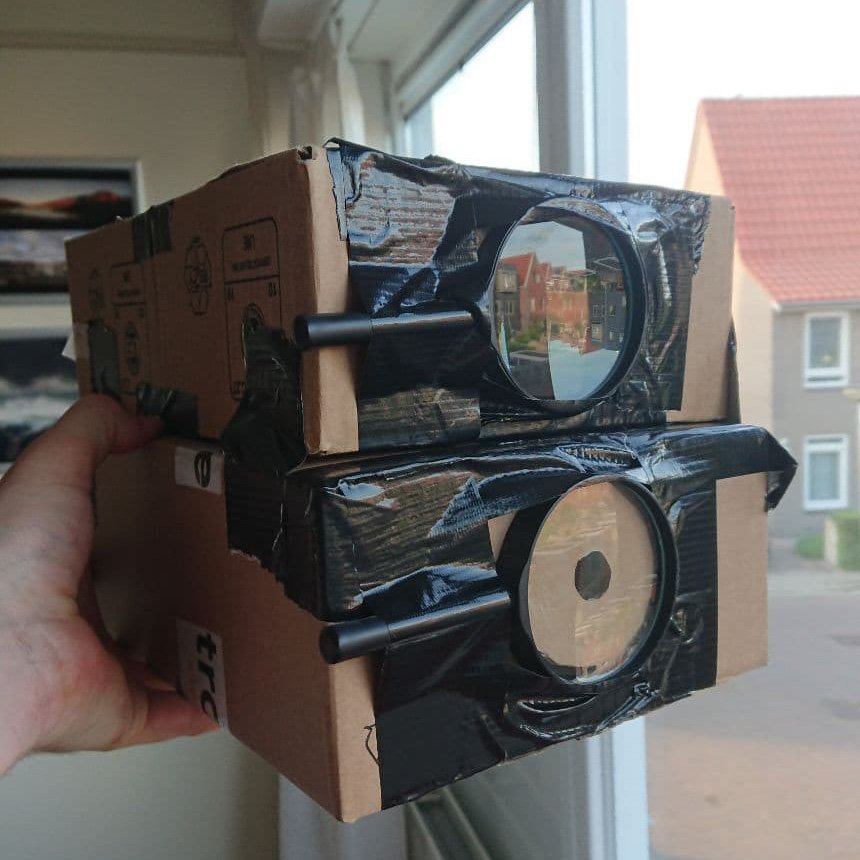
AMAZING RESULTS TIME
Adjusting the aperture down to f/16 had two major changes. As the paper I was using seemed to produce decent results if exposed at an ISO of 3, I was now able to use a "hand-operated shutter" effectively. (the lid of a development tank)
Also, results got a lot sharper.
Adjusting the aperture down to f/16 had two major changes. As the paper I was using seemed to produce decent results if exposed at an ISO of 3, I was now able to use a "hand-operated shutter" effectively. (the lid of a development tank)
Also, results got a lot sharper.
This is what the negatives are like that are produced with this camera. Other results on this page are mirrored and inverted after scanning on a flatbed.

These are taken at f/16 with an exposure time of about three seconds-

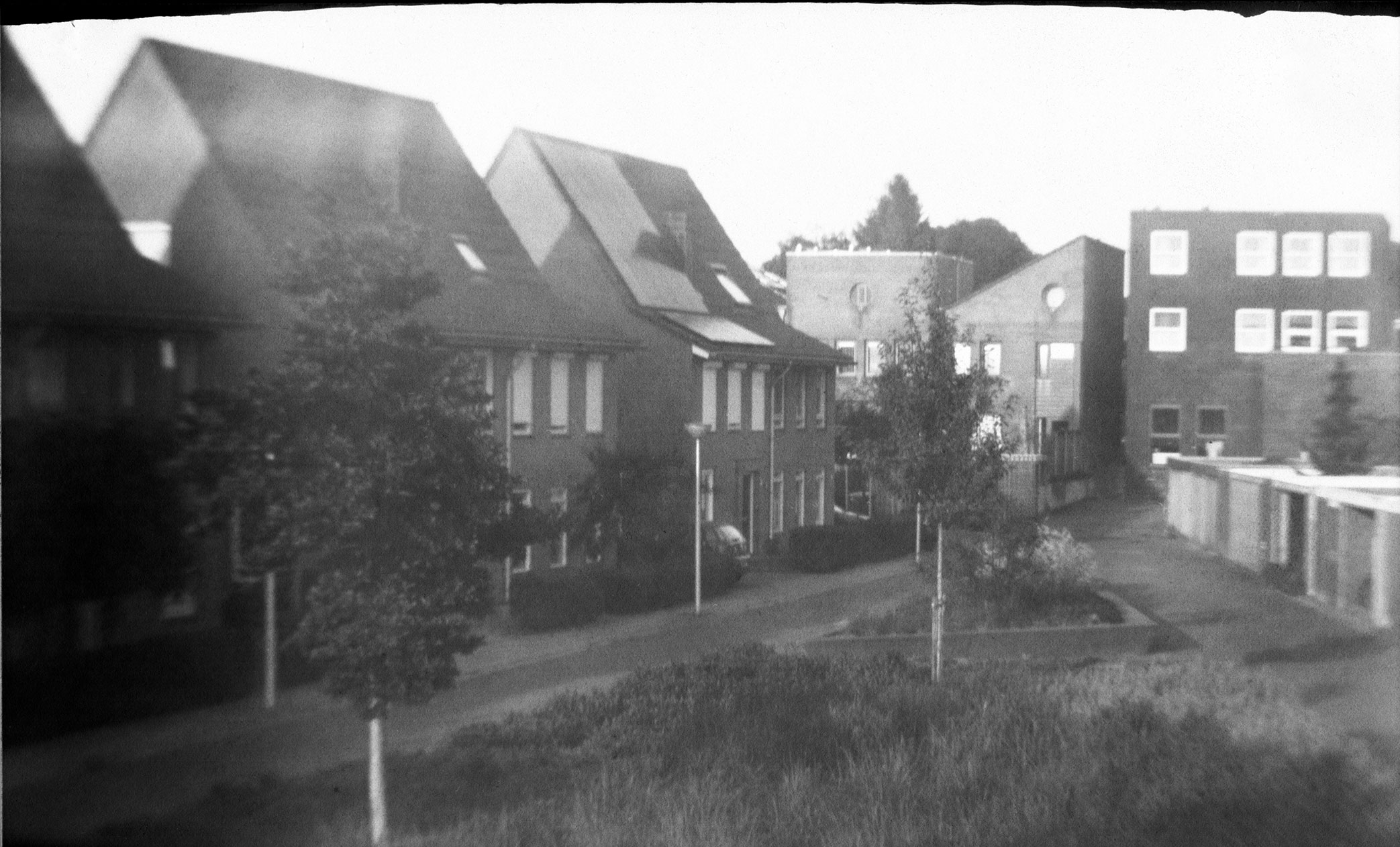
Here's one with a lower angle, to really show off all that detail in the plants-
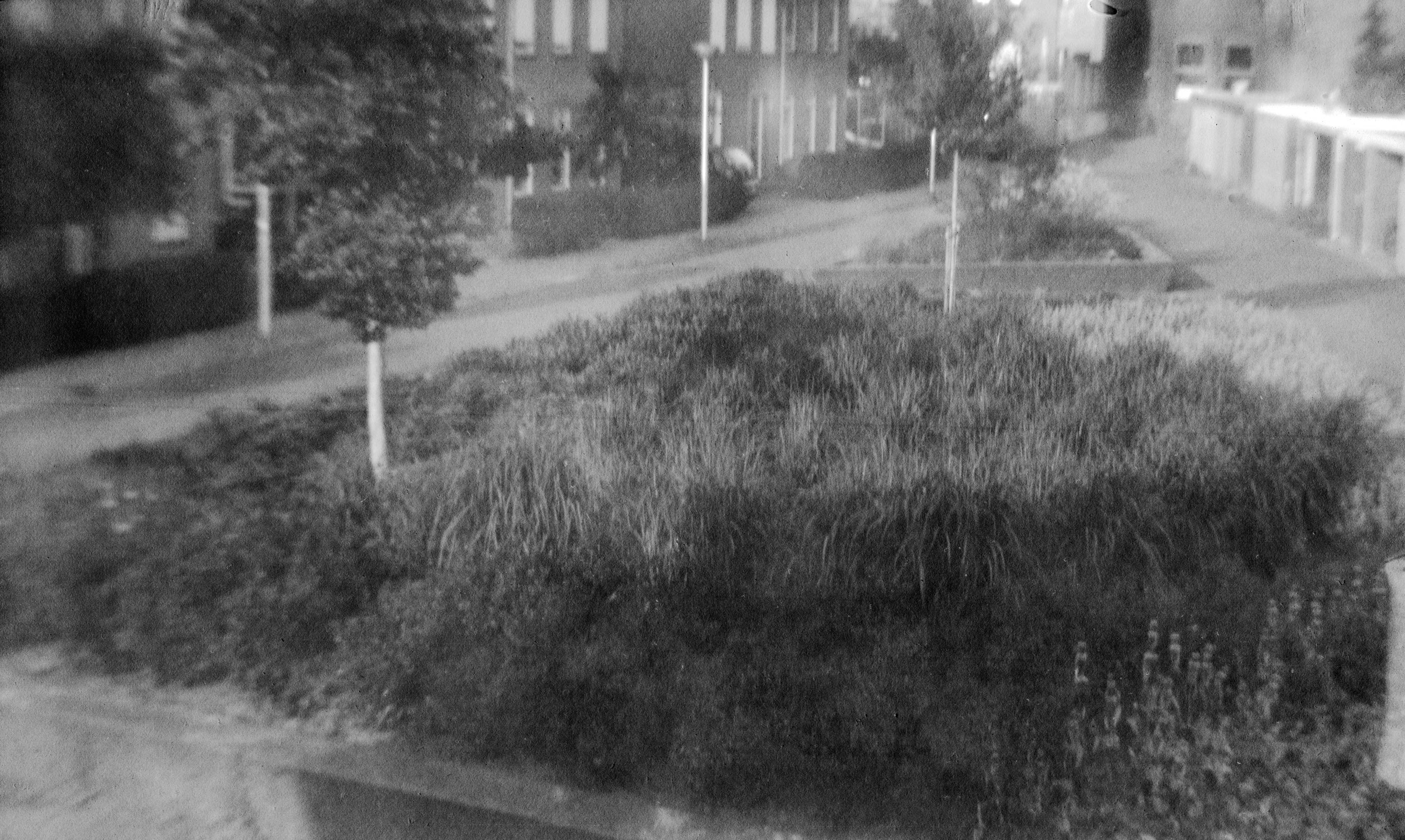 Then, as the evening neared, I took out the aperture again and took another exposure wide-open (so at f/5.6)
Then, as the evening neared, I took out the aperture again and took another exposure wide-open (so at f/5.6)
You can really tell the effect an aperture has on sharpness from these shots.
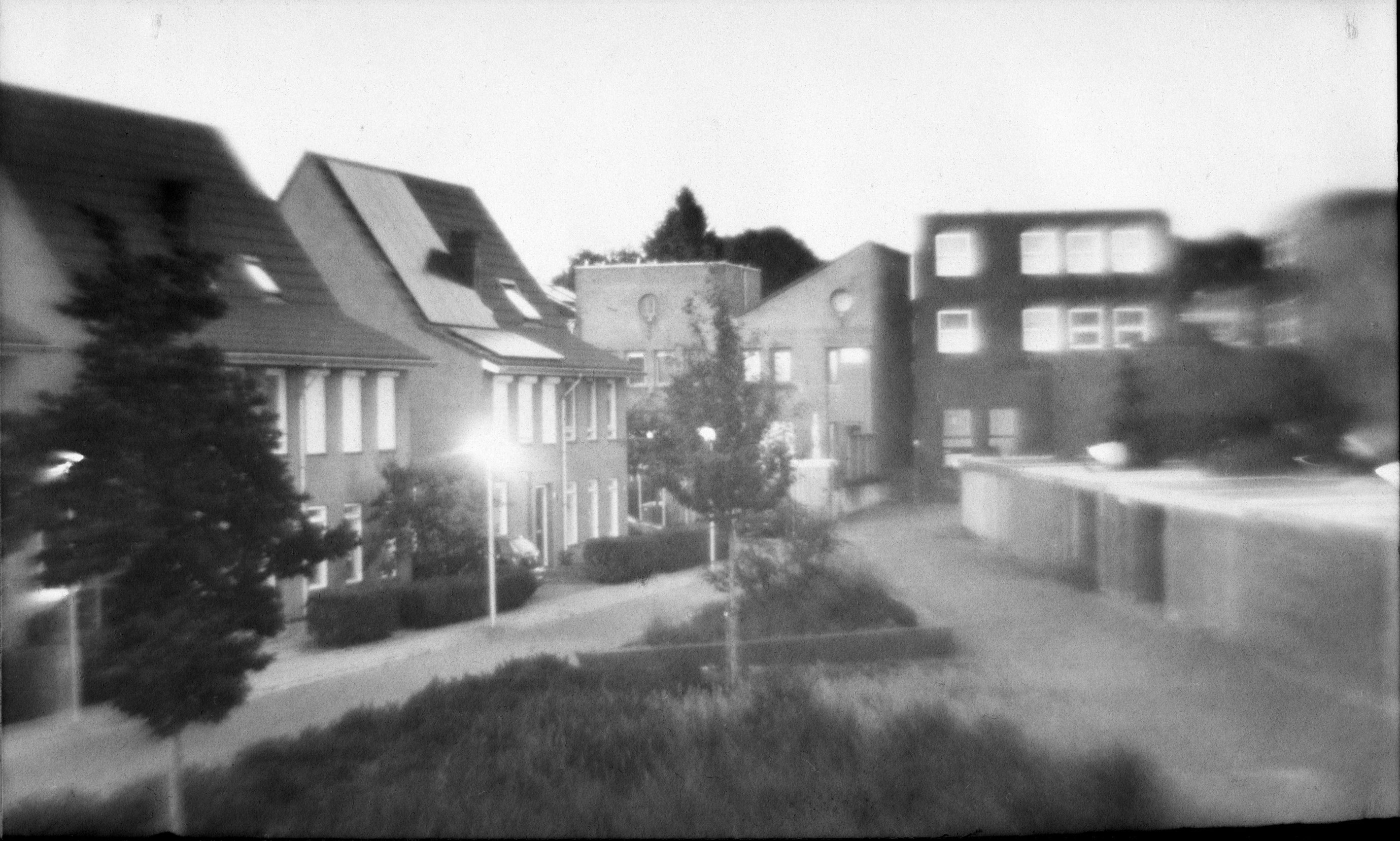
All in all, these results are not half-bad, if you ask me, considering what they're made with.
Results could've been improved further with the use of a color filter, as these get rid of chromatic aberration which is pretty severe due to the singlet lens.
However, inspired by this success I decided to one-up myself, and build *an even bigger camera.* This will be featured in an upcoming post.